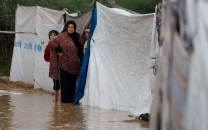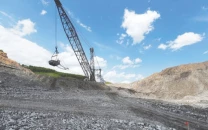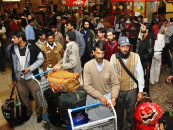Storm Laila wreaks havoc in Andhra, kills 14

Accompanied by heavy rains, high storm surges and winds with speeds of 125 km an hour, the storm hit the southern part of Andhra Pradesh, snapping mobile links, forcing cancellation of trains and damaging electricity and communication systems. State authorities said at least 40,000 people had been evacuated from low-lying areas of the state. Officials said huge storm surges were seen in the Bay of Bengal when the cyclone hit the coast about 50 km from Bapatla, a town in the southern district of Guntur, an Indian newspaper The Times of India (TOI) reported.
Storm surge of 1.5 to 2 metres inundated the villages along the coast, officials said. After the landfall, the cyclone re-emerged in the northern part of the Bay of Bengal and headed towards Balasore in neighbouring Orissa. Weather officials said the course of Laila was not unusual as there were precedents of cyclones re-emerging on sea after landfall. “We are still assessing the damage caused by the cyclone in coastal Andhra,” a top official in the disaster management department said in Hyderabad.
However, massive destruction is not likely as the cyclone had shown signs of weakening before it hit the land. “The intensity of cyclone Laila has reduced in the last 12 hours and it will further weaken in the next couple of hours. But it will continue to cause heavy rainfall over coastal Andhra Pradesh and Telangana during the next 36 hours,” Indian Meteorological Department (IMD) director general AK Tyagi told reporters in New Delhi. In Andhra Pradesh at least 11 towns and 1,500 villages were plunged into darkness as electricity poles and transformers were uprooted, officials said in Hyderabad.
Officials added that high speed winds also uprooted cell phone towers and damaged other communication equipment in Prakasam, Guntur, Nellore, Krishna, and East and West Godavari districts. Networks of almost all mobile service providers were not working in the affected districts, that caused anxiety to people in other parts of the state and outside. At several places, bus stations, shops and even hospitals were under two feet of water. Road and rail transport were also paralysed, especially in the worst-hit Prakasam and Guntur districts. The storm badly hit train services in Andhra Pradesh with as many as 31 passenger trains being cancelled Thursday and Friday and some others diverted.
Several trains are running four to six hours behind schedule due to incessant rains and gales. In Ongole town of Prakasam district, railway tracks were inundated. Mango, banana and other horticulture crops over thousands of acres in the coastal districts were damaged.
Published in the Express Tribune, May 21st, 2010.



















COMMENTS
Comments are moderated and generally will be posted if they are on-topic and not abusive.
For more information, please see our Comments FAQ